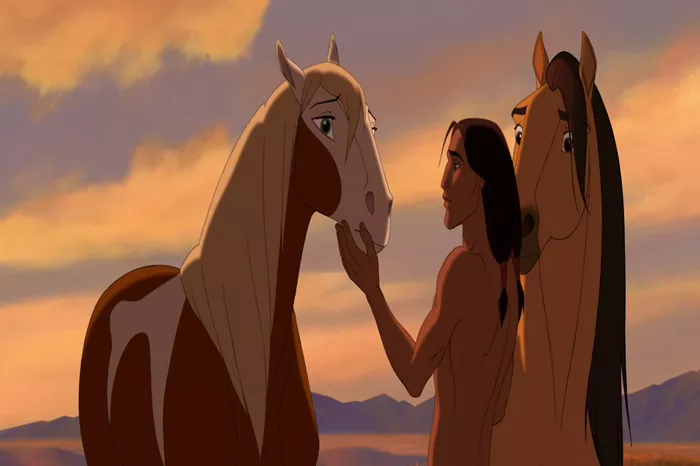DreamWorks Animation, renowned for its iconic films such as The Prince of Egypt, Shrek, and How to Train Your Dragon, has made a significant mark on the animation industry. However, among its many successes, Spirit: Stallion of the Cimarron stands out as one of its most overlooked gems. Despite its initial mixed reception, this film is widely regarded as one of the finest animated Westerns ever created, captivating audiences with its unique approach to the genre.
Plot Overview
Set against the backdrop of the 19th-century American West, Spirit: Stallion of the Cimarron follows the journey of Spirit, a Mustang horse who symbolizes the untamed spirit of the frontier. The film chronicles Spirit’s struggle to remain free after being captured by the United States Cavalry. As he endures the harsh realities of human civilization, he finds solace and friendship with Little Creek, a Lakota man, and a mare named Rain. Together, they face challenges and conflicts that highlight the tension between the wild and the encroaching forces of modernization.
Critical Reception
The film received a mixed response from critics, who noted that while the storyline might be predictable for adult viewers, its simplicity and authenticity were refreshing. Spirit: Stallion of the Cimarron is notable for its minimal dialogue between animal characters, relying instead on expressive body language and visual storytelling. This approach distinguishes it from other animated films filled with talking animal sidekicks and comic relief, offering a more immersive and realistic portrayal of its characters.
Character Archetypes and Themes
The characters in Spirit: Stallion of the Cimarron align closely with classic Western archetypes. Spirit embodies the rugged independence and traditional values of the Western hero, while the antagonist, the US Cavalry, represents the greed and desire for progress that often clash with the natural world. This conflict mirrors the genre’s exploration of civilization versus the wild, with Spirit’s struggle symbolizing a broader resistance to imposed order and modernization.
The film’s supporting characters, particularly the US Cavalry, reinforce the themes of westward expansion and manifest destiny. By portraying Spirit as a victim of these forces, the film critiques the destructive impact of technological progress on the natural world. Conversely, Little Creek’s respectful and kind treatment of Spirit illustrates the possibility of harmony between humanity and the wild, suggesting that coexistence rather than domination is achievable.
Western Themes and Legacy
Spirit: Stallion of the Cimarron delves into timeless Western themes such as freedom and courage. The film’s exploration of Spirit’s quest for liberty and his acts of bravery in the face of adversity draw parallels to classic Western narratives. Similar to the conflict depicted in John Ford’s The Searchers, Spirit’s journey highlights the struggle between personal freedom and societal constraints.
The film’s portrayal of courage, particularly Spirit’s daring destruction of the railroad, echoes the valor seen in renowned Westerns like True Grit. Spirit’s relentless determination and willingness to risk everything for his homeland underscore the film’s contribution to the Western genre, demonstrating that animated features can successfully engage with these profound themes.
In conclusion, Spirit: Stallion of the Cimarron may not have achieved the commercial success of some of DreamWorks’ other films, but it remains a standout entry in the animated Western canon. Its rich thematic content and innovative storytelling make it a must-watch for fans of both animation and Westerns.
Related topic:
Who Played The Joker in the Joker Movie? [Revealed]
Will There Be a King Kong vs. Godzilla Movie 2?
Will There Be Another Jurassic World Movie?

